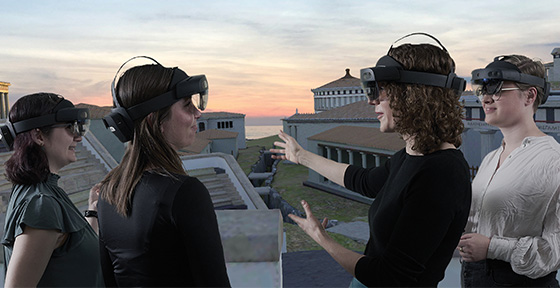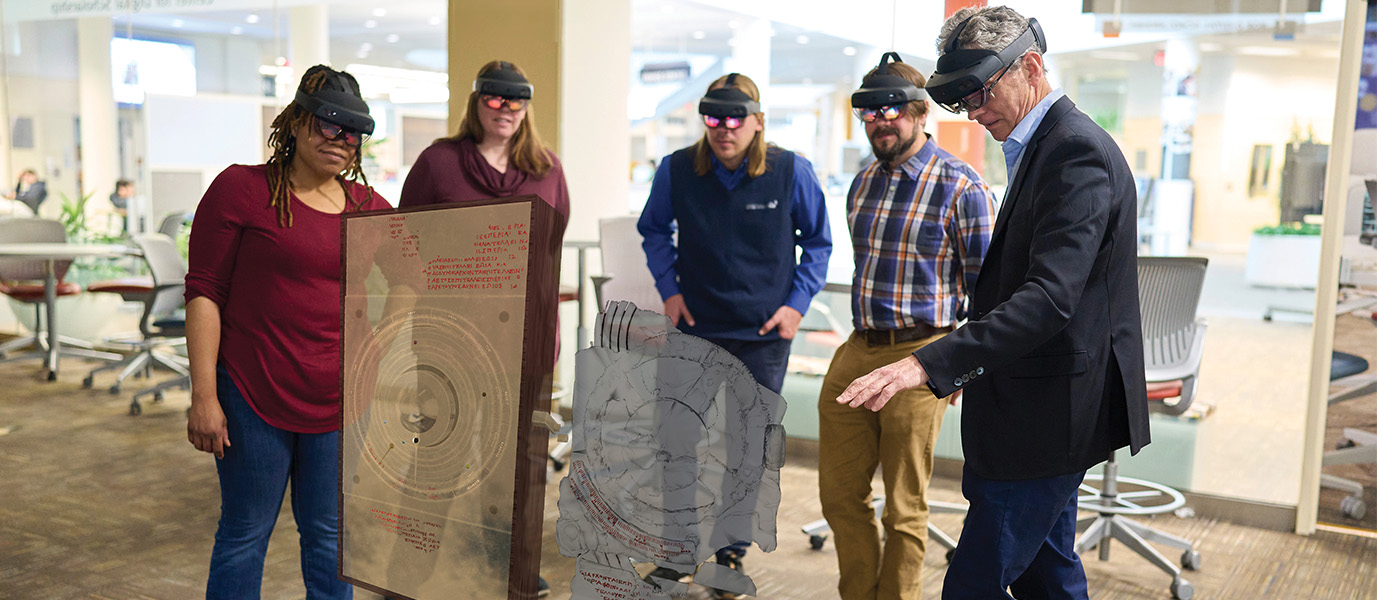This article originally appeared in the fall/winter 2023 edition of art/sci magazine. This semester, The Daily will share some of the articles from the latest edition of the magazine. View more stories at artsci.case.edu/magazine/.
Students at the College of Arts and Sciences are seeing and experiencing remarkable places—without ever leaving the classroom.
Wearing mixed-reality headsets, they can walk amid 3D holographic images of a 2,000-year-old Greek religious site; explore the three-dimensional geologic contours of a Hawaiian volcano; and examine the inner workings of a centuries-old computing device.
A Case Western Reserve University innovation center pioneered development of these immersive journeys. It created the first education application for Microsoft HoloLens headsets in 2014, one to teach anatomy to medical students.

In more recent years, this center—the Interactive Commons—has worked with faculty at the college and across campus to create about 20 customized apps for many disciplines. The technology allows students to interact simultaneously with holographic images, classmates and their professors—an experience known as mixed reality.
“The level of insight that mixed reality brings to a broad range of disciplines is just unattainable through traditional teaching methods—and it’s increasing student knowledge,” said Mark Griswold, PhD, a CWRU professor and faculty director of the Interactive Commons.
Pilot studies have found, for example, that CWRU medical students learn anatomy twice as fast with the HoloAnatomy app as they do dissecting cadavers. At the college, early HoloLens pioneers include art historian Elizabeth Bolman, PhD, the Elsie B. Smith Professor in the Liberal Arts, whose students use the technology to “visit” Egypt’s fifth-century Red Monastery; and dance professor Gary Galbraith (CIT ’86; GRS ’88, dance) who has choreographed dances in which holographic images change location based on performers’ movements.
Academic leaders hope to see the technology used campuswide by 2030—and future students arriving with their own headsets in backpacks, said Griswold, also the Pavey Family Designated Professor of Innovative Imaging-Revolutionizing the Worlds of Education and Medicine.
“It’s going to be the way of the future of learning,” he said. Read more to explore a few examples of how the technology is used across the college.

